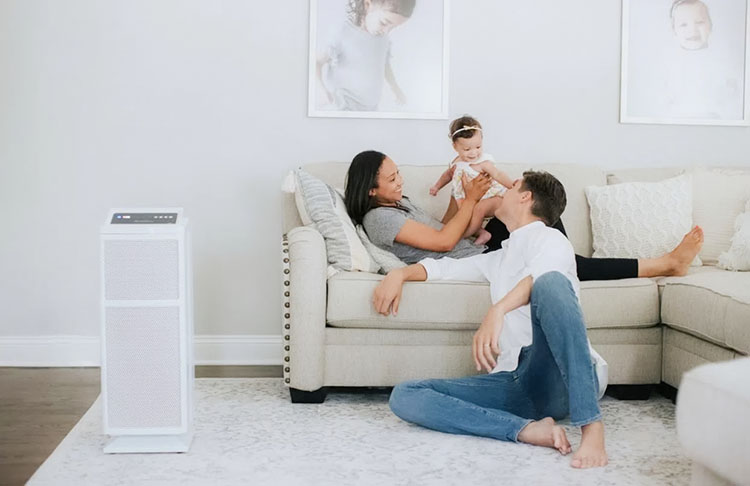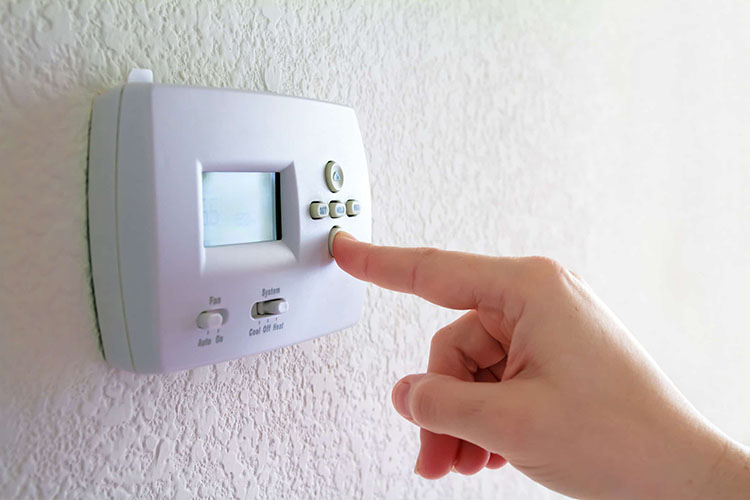Common Reasons Why Your Ac May Not Be Cooling Your Home
Home air conditioning systems are an essential part of modern life, providing comfort and protection from the heat. However, when these systems stop functioning as they should it can be a cause for concern.
The most frequent causes of AC problems include dirty filters or coils, thermostat issues, insufficient refrigerant levels and blocked airflow. In addition to these mechanical faults, there is also the possibility that electrical components might have failed due to age or wear and tear.
By understanding what could be causing the issue you can better prepare yourself to call a professional air conditioning repair Phoenix AZ.
Dirty Filters And Coils
The air conditioner in a home is an effective way to keep the house cool, but can sometimes fail at its job. One of the main causes of this malfunction is dirty filters and coils, which can reduce cooling efficiency.
These components are designed to trap dust and other particles from entering the internal system of the AC unit, while also helping it maintain optimal operating temperatures by releasing condensate to prevent overheating. However, if these parts become too clogged with debris over time, they will not be able to do their jobs effectively; this leads to poor air circulation and reduced cooling power throughout the entire household.
Moreover, blocked drains can create further issues as condensate may not flow properly through the system. This often results in water leakage and additional damage that requires costly repairs or replacements.

In order to ensure maximum levels of comfort and energy savings inside one’s home during hot weather conditions, it is important to regularly clean or replace all filters and coils within the AC unit. Doing so ensures that any obstructions are removed before they cause serious problems with temperature regulation or lead to expensive repairs down the line.
Thermostat Problems
The first step in diagnosing air conditioning problems is to consider thermostat issues. If the thermostat has been set incorrectly, it can lead to overheating or poor cooling of your home.
Likewise, if the temperature setting is too high and not adjusted properly, then this could result in an inefficient AC system that doesn’t adequately cool your space. Furthermore, a malfunctioning thermostat may cause the unit to run continuously without ever reaching its desired temperature setting.
It’s important to regularly check for any signs of wear and tear on the thermostat as well as ensure all settings are correct; otherwise, you will be wasting energy trying to cool a room that isn’t correctly regulated.
To prevent further damage to your system and avoid costly repairs, take measures to adjust the settings accordingly before making any other changes. With proper thermostat maintenance and by ensuring all settings are accurate, you should be able to reduce potential overheating issues caused by incorrect settings.
Insufficient Refrigerant Levels
Rising temperatures and increasing humidity can cause a strain on air conditioners, reducing their efficacy. This is especially true if the refrigerant levels in an AC unit are insufficient.
Low pressure in the system reduces the amount of cooling that occurs to the interior environment, resulting in high indoor humidity and poor comfort levels. Unfortunately, it’s not uncommon for homeowners to experience this issue due to either improper installation or maintenance issues with their ACs.
To combat this problem, they should check their HVAC systems regularly and look out for signs of low pressure, such as warm air blowing from the vents or frost build-up around components within the machine.
If these symptoms persist after regular maintenance checks have been done, then professional help may be needed to rectify the situation before discomfort becomes unbearable.
Blocked Airflow
One of the most common reasons why your air conditioner may not be cooling your home is due to blocked airflow.
Blocked vents, restricted ducts and other impediments can prevent air from entering or exiting a room, resulting in insufficient cooling.
This problem is especially likely if you have pets that shed hair or dander; these items may accumulate on the inside of the vents over time and limit their ability to deliver cool air into the environment.
Additionally, blockages could occur near the exterior walls of your house where outside heat can enter through cracks and crevices.
An obstructed ventilation system can also result in an accumulation of dust and dirt particles within certain areas of your AC unit, thus limiting its effectiveness.
Electrical Components Malfunctioning
The root cause of an air conditioning unit not cooling a home is due to electrical components malfunctioning. This can include issues such as a condenser fan motor failing or the compressor no longer working properly. If either of these two parts is having difficulty running, the entire system will be unable to function correctly and thus produce warm air instead of cool air.
It is important that regular maintenance inspections are performed in order to detect any potential problems with electrical components before they reach critical levels. Regularly inspecting all electrical components associated with your AC unit also helps avoid unnecessary costs from major repairs or replacements down the line.
By ensuring each part has adequate lubrication, cleaning debris away from fans and motors, checking for any signs of worn-out wires and belts, and replacing faulty capacitors when necessary, you can save yourself both time and money by avoiding more extensive damage from occurring later on.

Incorrectly Sized Air Conditioner
Incorrectly sized air conditioners can be a common cause for improper cooling in your home. An improperly sized AC unit will not be able to work efficiently and may struggle to maintain the desired temperature of the room or area being cooled.
Installation practices are also important when selecting an AC unit – incorrect installation can lead to inefficient operation or worse, complete malfunctioning of the system. Inadequate insulation around windows and walls could limit airflow into space or prevent the efficient distribution of cold air throughout a home. Poor craftsmanship during installation can prevent proper sealing between ductwork joints resulting in leakage of heated/cooled air that would otherwise have been utilized within the space itself.
Poorly Maintained Air Conditioner
The inability of an air conditioner to cool a home may be due to poor maintenance. The root cause of this can often be traced back to overheated compressors and inadequate insulation, both of which are issues that should have been identified by the homeowner during regular maintenance checks.
This is especially true for those living in hot climates where temperatures soar above normal averages on a daily basis. Overheating of the compressor leads to increased wear and tear, eventually resulting in costly repairs or even complete replacement. Inadequate insulation also reduces its efficiency as it allows heat from outside sources to enter the system while preventing cold air from staying inside.
To ensure proper cooling, homeowners must inspect their units regularly and make necessary adjustments if needed.







